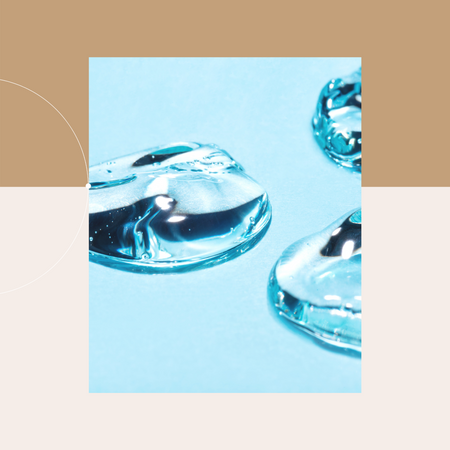When you’re first starting out in skincare, any ingredient with the word “acid” in it can be a scary one. But skincare acids are some of the most useful ingredients for tackling everything from acne to ageing, a dull complexion to hyperpigmentation. Just take azelaic acid for example, this wonder ingredient can help with acne, hyperpigmentation and even rosacea. Confused about what azelaic acid actually is and whether you should be using it in your skincare routine? That’s where we can help.
Here at Face Dr, our mission is to help everyone get clear and glowing skin they’re proud of. Our experts have decades of experience working in the industry, so they know everything there is to know about ingredients, products and routines to get real results.
Here, we’ll be doing a deep dive into azelaic acid to help you decide if it’s for you.
Here’s what we’ll cover:
- What is azelaic acid
- What does azelaic acid do for the skin
- How does azelaic acid work
- How to use azelaic acid
- Who should (and shouldn’t) use azelaic acid
- Which ingredient can you use with azelaic acid
- The side effects of azelaic acid
- The top products to try with azelaic acid
Wondering if azelaic acid is for you, but want to skip the research? Our experts are on hand to give you personalised advice. You can book a free online skincare consultation where a professional can analyse your skin and let you know if azelaic acid can help with your concerns, or whether there’s a better ingredient out there for you. Plus, they can recommend the best products you should be using, too.
Interested in other skincare ingredients out there? We’ve covered everything from lactic acid, to glycolic acid, Matrixyl 3000 to ceramides.
Now onto azelaic acid. Here’s all the information you need on this complexion-boosting ingredient.
What is azelaic acid
Azelaic acid is dicarboxylic acid, so it’s slightly different from other acids you may have already heard of like glycolic acid (an AHA) or salicylic acid (a BHA).
It’s made from yeast and is derived from grains like wheat, barley and rye, and it can even be found naturally in the skin. However, most of the time, azelaic acid found in skincare is made in the lab. You’ll find this ingredient everywhere from serums to cleansers, moisturisers to masks.

What does azelaic acid do for the skin
Azelaic acid has a range of benefits. Here’s what it can do:
- Clear up acne and breakouts
- Reduce inflammation and redness
- Brighten hyperpigmentation
- Even out skin tone
- Reduce rosacea

How does azelaic acid work
Azelaic acid has a range of benefits, so it targets a few different things in the skin. First up, it acts as an exfoliant, helping to remove dead skin cells from the surface of the skin and also from deep within the pores. This brightens hyperpigmentation, evens out the skin tone and leaves behind a more glowy looking complexion in general. By unclogging the pores, it also helps to clear up acne and breakouts, too.
But the acid is also antibacterial which means it can kill the bacteria that causes acne, small bumps on the skin and even rosacea. Beyond this, azelaic acid communicates with the enzymes in the skin that produce melanin—the pigment that gives the skin its colour. This means that it can help to decrease the amount of existing dark spots and discoloured patches on the skin, as well as stopping any new ones from forming.
It’s also been shown to be effective at lightening post-inflammatory hyperpigmentation—the name given to the dark spots left behind after an acne breakout. So it’s perfect for those who suffer with both the acne breakout and the dark spots that follow, as you can target both with one ingredient.
How to use azelaic acid
How you use azelaic acid will depend on the product you buy with the ingredient in. For the most part though, azelaic acid is safe to use twice a day, morning and night. If you’re prone to sensitive skin—or notice that the ingredient is drying for you—try using it every other day instead.
If you have AHAs, BHAs or retinol in your routine, apply these first before applying azelaic acid as this will help the skin absorb the azelaic acid more readily. Follow up with your favourite moisturiser and SPF in the morning.
Who should (and shouldn’t) use azelaic acid
Azelaic acid is suitable for all skin types, even sensitive skin. In fact, some research shows that azelaic acid may even make your skin less sensitive over time and reduce those small bumps and redness that can occur from irritation.
Azelaic acid is even safe for those who are pregnant.
Even though some forms of azelaic acid are derived from wheat, it’s safe for those who are gluten intolerant. That’s because there’s simply not enough of the gluten in the final product to get absorbed through the skin and cause a reaction.

Which ingredient can you use with azelaic acid
Thankfully, azelaic acid plays nice with plenty of other skincare ingredients. For example, there’s no need to avoid other skincare acids when using azelaic acid. You can apply AHAs and BHAs as part of the same routine. You can also still use retinol if you add azelaic acid to your routine too.
What should you avoid? Most experts agree that azelaic acid is actually safe with practically every skincare ingredient out there. However, as everyone’s skin is different, you may notice a reaction that other people don’t get. Just keep an eye on your skin, and stop using the product if you notice any irritation or reduce the amount of times you use it each week.
The side effects of azelaic acid
Any skincare ingredient comes with the risk of side effects. Luckily, in the case of azelaic acid, these side effects are rare and minor.
Look out for:
- Peeling
- Drying
- Redness
- Itchiness
If you notice any of these side effects, stop using the product and they should clear up on their own in just a few days. You may even find that you can go back to using the product, just less regularly—like every other day rather than every day.
The top products to try with azelaic acid
Have we convinced you to try azelaic acid? Here are the top products we recommend that contain the ingredient:
- Paula’s Choice 10% Azelaic Acid Booster — this serum puts azelaic acid at the forefront of the formula. You can use it as a standalone product or add it to your favourite serum or moisturiser.
- PCA Skin Pigment Bar — with azelaic acid and other complexion-boosting ingredients like kojic acid and niacinamide, you can lather this bar up and leave the product on your face for a few minutes before rinsing.
- REN Ready Steady Flow Daily AHA Tonic — with lactic acid, salicin and azelaic acid, this tonic is perfect for brightening the complexion and clearing up blemishes and breakouts.
Want to be really sure azelaic acid is for you?

Hopefully, you know now exactly what azelaic acid can do for the skin, but how do you know whether it can work for you? Choosing whether to try a new skincare ingredient can be tricky. Especially as you need to think about not only your skin type and concerns, but also the other ingredients in your routine. Luckily, there is an easy, fast and free way of doing that—and that’s by speaking with a Face Dr expert.
We offer free online skincare consultations where you can speak with a member of our friendly team. In just 30 minutes, all from the comfort of your own home, they’ll be able to analyse your skin over a video call and ask about your exact concerns.
Plus, if there’s any ingredient out there that’s even better for your skincare concerns, they can let you know. Our experts can offer tailored recommendations for products to slot into your routine, or help you build a brand new one from scratch.
When it comes to recommendations, we only ever share products that we know, love and—more importantly—have seen first-hand results from.






